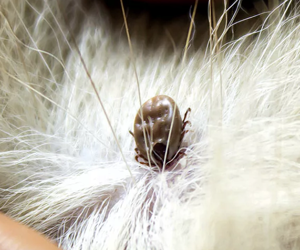 Dogs are a huge part of our lives and families. We love taking them outside for walks, to relax, and to play. Anytime we venture outside with our pets, ticks become a worrisome bother since they love to attach themselves to pets.
Dogs are a huge part of our lives and families. We love taking them outside for walks, to relax, and to play. Anytime we venture outside with our pets, ticks become a worrisome bother since they love to attach themselves to pets.
Ticks are responsible for a bevy of illnesses that can make your pampered pooch extremely sick. The best way to prevent these issues is to prevent the tick from attaching in the first place.
Learning how to prevent ticks on dogs can make your trips outside safer and much more fun for both your dog and you while protecting the health of your very best fur-friend. Let’s get started!
What is a Tick?
Ticks are small insects that belong to the same scientific classification as spiders, Arachnida. The tick feeds on blood by biting humans and other mammals. There are over 800 different types of ticks but luckily, only a few species of ticks carry harmful diseases that can make pets and people very ill.
How do Ticks Bite?
A tick can attach itself to your pet by inserting its mouthparts into your pup’s skin. Many tick species are able to create a sticky substance similar to glue that allows them to remain attached. After securing itself, the tick begins to feast on your dog’s blood.
The area where the tick bites can be red and inflamed. In rare cases, a tick could drink enough blood to cause anemia in your pooch. They also carry diseases like Rocky Mountain Spotted Fever and Lyme Disease, which we will explore further.
Who Is at Risk of Tick Bites?
Individuals living near woods or grassy areas are at a higher risk of coming into contact with ticks. The months of April through September seem to be the most likely times for a tick bite. Taking your dog for a walk increases the likelihood of a bite, but there are measures to take to protect yourself and your pet.
Ways to Prevent Ticks on Dogs
Let’s take a closer look at some of our favorite tips and tricks to keep your furry best friend and yourself safer from ticks.
Tick and Flea Repellant
When protecting your pets from ticks, preventing them from attaching through the use of a repellant is the key to success. There are many tick repellants available for purchase. Read labels carefully to check that the treatment prevents ticks as well as fleas as some only prevent fleas. You also need to be sure to order the right dosage for your dog’s size, usually based on their weight.
Avoiding Areas with Ticks
You may want to just avoid certain ecosystems that are prevalent with ticks. Spots like forests or densely vegetative areas are usually harboring lots of ticks, fleas, and other insects. Try to keep your pup on trails when hiking and steer clear of decaying leaves and tall grasses to avoid picking up any ticks.
Perform Some Lawn Maintenance
Having a well-kept yard not only helps your property to look beautiful. Caring for the lawn, shrubs, woodsy areas, and lush gardens can keep pesky critters at bay. Raking up dead leaves and grooming shrubs can make all of the difference in the world to prevent ticks on your pets. It also provides a bit of healthy exercise, which is always a plus.

Evict the Ticks
For some folks no amount of average lawn maintenance will rid them of ticks. In these situations, hiring an exterminator can help. The exterminator will assist you in creating an atmosphere that is no longer appealing to ticks.
Checking for Ticks
Checking your dog for ticks is imperative. Check behind and inside of your pup’s ears, around the tail, eyes, and eyelids, under the collar, between their legs, under their legs, and between their toes. Examine your pet and yourself anytime you’ve been out in nature.
What Diseases do Ticks Carry?
Ticks carry a plethora of illnesses. Some target humans while others can make pets extremely sick. Let’s take a closer look at some of the illnesses that can be caused by a tick bite.
- American Canine Hepatozoonosis: Caused by the actual ingestion of the tick which can occur while your dog is grooming. This illness is very serious and can be fatal.
- Babesiosis (Piroplasmosis): This illness is caused by the organism Protozoa and can cause shock syndrome in dogs.
- Tularemia: A less serious disease that can cause lethargy and vomiting in canines.
- Tick paralysis: This disease can cause your pooch to become limp and lethargic.
- Anaplasmosis: This common malady is caused by the bite of a dog tick and requires antibiotic treatment.
- Ehrlichiosis: The disease can make dogs lose their appetite entirely and will require antibiotics to get better.
Rocky Mountain Spotted Fever: A common disease carried by ticks that can cause many issues including lameness and fevers.
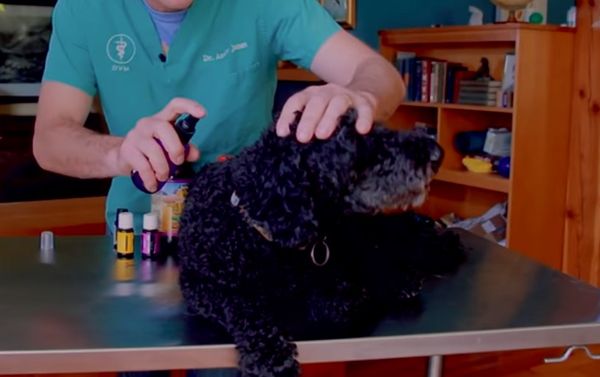
Lyme Disease: Lyme disease can be serious, but it is treatable. Lyme Disease causes arthritis and swelling in your pet’s joints, which can make walking difficult and very painful. A vaccine exists for protecting dogs from Lyme disease which is a smart idea especially for folks living in tick-infested areas.
How Do I Remove a Tick from My Dog?
In the event that a tick does find its way onto your furry best friend, it’s helpful to understand the proper way to remove them.
What You Will Need
To safely remove a tick you will need to gather a few items. You will need tweezers with pointy tips. Tweezers with flat tips can break part of the insect off, which could result in you or your pet getting sick. You will also need a towel or tissues and rubbing alcohol.
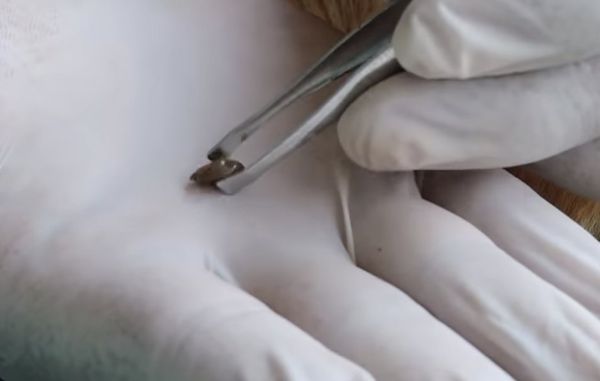
How to Remove the Tick:
- After gathering your supplies, start off by cleaning the area surrounding the tick with rubbing alcohol. If you do not have rubbing alcohol, you can also use antibacterial soap and water.
- Carefully place the tweezers as close to the tick as possible where it exits the skin. This will allow you to grab closer to the tick’s head. Lace the pointy tweezer ends around the exposed part of the tick. Take your time as some ticks can be as small as a poppy seed.
- Once your tweezers are in place, pull up slowly and firmly. Use steady pressure and try your best not to twist, turn, or jerk the tick out as the head could break off and be stuck.
- After the tick has been removed, you will need to clean the area thoroughly with rubbing alcohol or soap and water. You can apply a Band-Aid or gauze if needed to stop any bleeding. Make sure to wash your hands with soap and water to remove any germs.
What Should I do with a Tick After Extracting It?
Now that you have extracted the pesky tick it’s time to deal with it. You may want to place it in a sandwich bag to take it for testing. Testing the tick ensures it doesn’t carry any harmful diseases and can give you a leg up on starting treatment sooner in case of any suspected illnesses. Some state agencies, veterinary offices, and public health clinics perform testing in house, or they can assist you in finding someone that does.
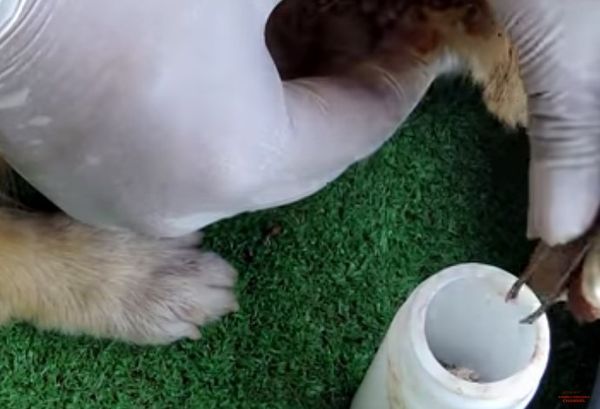
If you aren’t concerned about testing, you can flush the tick down the toilet. Do not crush the tick with your fingers as it could give you a disease. Make sure to wash your hands well with antibacterial soap and warm water for at least 20 seconds to keep your hands germ-free now that you are tick-free.
Ticks can take a lovely day hike and turn it into a nightmare. They carry many harmful diseases that can prove fatal to both humans and dogs. Understanding how ticks attach to pets (and people) can give us valuable insight into stopping them.
Since ticks carry such dangerous diseases, preventing them from biting in the first place remains the most effective tool to prevent tick-related illnesses such as Lyme Disease or Rocky Mountain Spotted Fever. From taking walks in less densely wooded areas, the use of anti-tick topicals, to enlisting the help of a professional exterminator there are many ways to keep your dog safe from ticks.
We hope you enjoyed learning about tick prevention for dogs with us today. We love hearing from our readers. Please leave us a quick line below with your best tick prevention and removal tips.
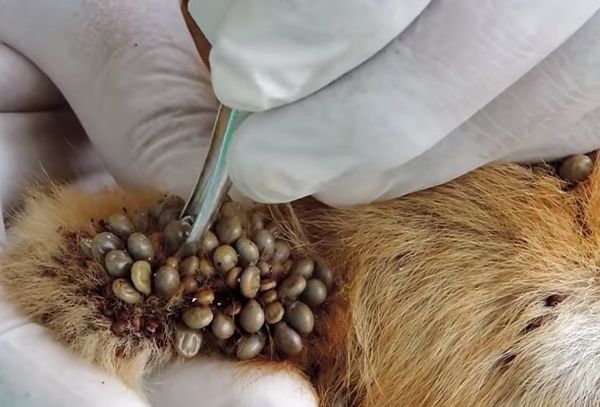

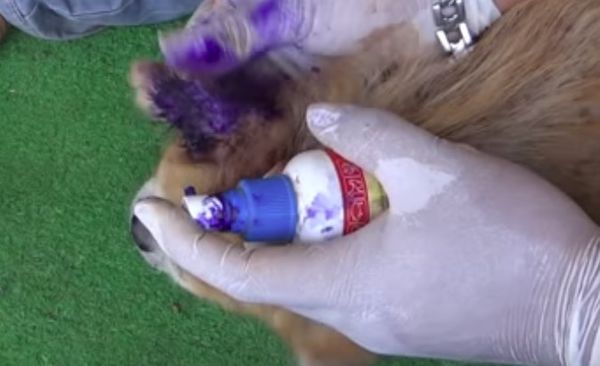
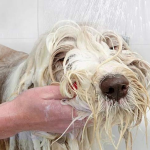
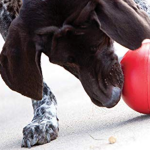


All these recommendations seem obvious, but I still make some mistakes which you showed here. So, I hope that I’ll remember everything you’ve said and try your tips in life.
By the way, you can still grease the area around the bite with fat cream or vegetable oil. then the pores on the skin become clogged and the tick cannot breathe under the skin of your pet. He begins to crawl back out himself, then it is easier to remove.
Scared when your pet is helpless in the face of illness or danger. It is very important to come to the rescue in time. By the way, now we know, that these sprays are good for many breeds. We have Mops and Labrador. And it’s OK with these tools.
This sad story happened to my friends’ pet. Always, before walking through the woods, they used a tick repellent. but not that time, they just forgot about it .. unfortunately, it was not possible to save their furry friend 🙁
In the hair of curly dogs, it is very difficult to make out ticks. This is a disaster. We have to cut small areas of wool to get to the enemy
Sprays do not always help, but tablets protect your pet’s body well. True, they are allergic. So, pick a pill for a specific breed
The Cat Mate Large Cat Door is very very reliable! We’re quite security focused so we were aiming for something sturdy. Overall we’ve been really impressed with this cat flap.
What breed is your dog? You need to choose the dosage of the medicine according to weight and age
American Canine Hepatozoonosis is an awful sickness. The most dangerous, i guess, what can be with dogs because of ticks. In the most cases it’s deadly.
American Canine Hepatozoonosis is an awful sickness. The most dangerous, i guess, what can be with dogs because of ticks. In the most cases it’s deadly.
Most of the pet-clinics Anaplasmosis is totally treated. But if you haven’t any clinic near, that may be also deadly. You’d better know how to use natural antibiotic drugs.
In addition to treating Pets in tick season better to treat the soil around the house.
The picture looks just awful. Sorry for all these poor fellows. We give Pets tablets for 2 weeks before the start of the season.it’s good.